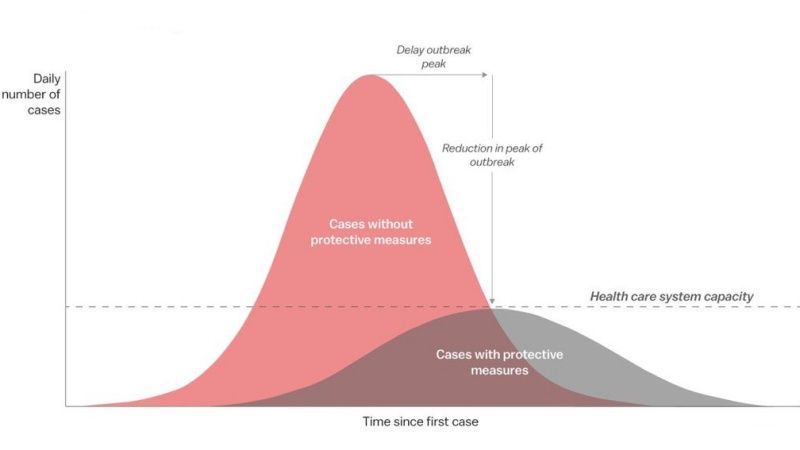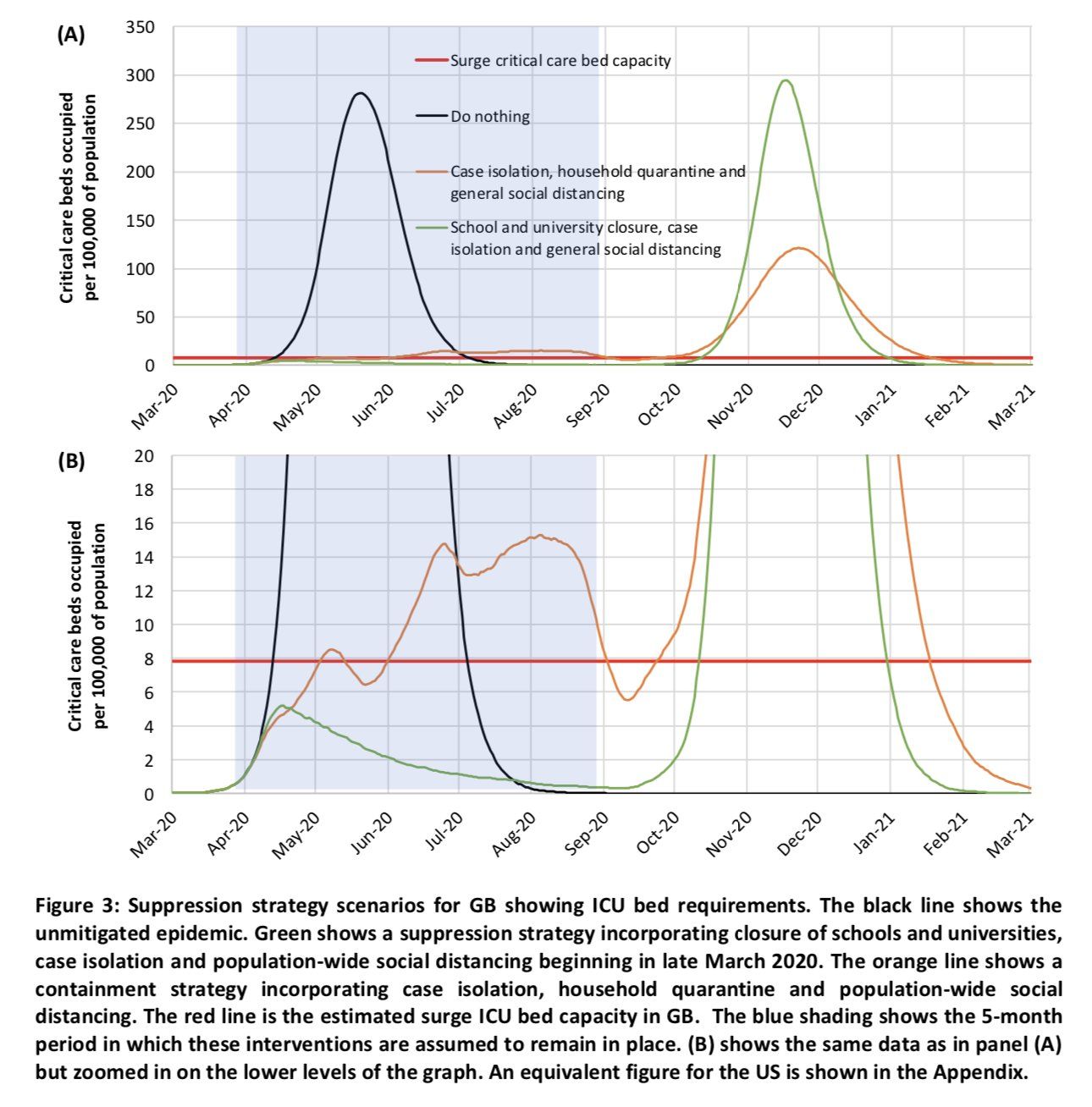Yes, it's a post about the COVID-19 pandemic, because this year nobody is talking about anything else. But I've been holding off because the situation changes every day. Last Friday, my University announced that it would stay open until the end of term, two weeks away. On Monday, they announced the immediate end of all face-to-face contact with students, and on Tuesday they emailed all students saying go home if you can.
The problem with COVID-19 is that it is so infectious that the growth of cases is exponential. This became apparent in China two months ago but the western world somehow remained in denial that it would come here, or be as infectious here, until now. Hospital cases of COVID-19 in the UK are now doubling every 4 days.
In the last couple of weeks, the internet has been full of graphs explaining why it's so important to slow this exponential growth: because unchecked growth soon overwhelms the ability of hospitals to cope with new cases, and people die for lack of treatment (oxygen and ventilation), as well as uninfected people dying of other causes because they couldn't be admitted to hospital. This one is a good example:

These graphs are great at explaining why protective measures are needed to bring the growth in new cases of COVID-19 down below exponential growth. But they don't tell us where we are in that picture now, because there are no labels on the axes.
Then, a couple of days ago, Imperial College published a report showing graphs with numbers specifically about the UK, comparing suppression strategies. It shows that we are now just two weeks away from hitting the red line. I can't stop thinking about the implications of this.

It shows why we have to close pubs and universities and, very shortly, schools: to keep the number of cases within the hoped-for ("surge") number of ICU beds. Otherwise, with social distancing alone, the NHS is utterly overwhelmed in June, July and August.
But it also shows what happens when we stop the drastic measures (the shaded area). COVID-19 growth resumes its exponential growth, and five weeks after things re-open, it's wildly out of control again. As we have all understood in recent weeks, curve flattening is essential to stop the exponential growth. But the potential for exponential growth remains until the disease is eliminated.
I can't see how this means anything other than this: everything has to stay closed until after most of us have been vaccinated. They say a vaccine is probably 18 months away before mass production, and the countries able to mass produce vaccines will surely use it for their own populations first, because of the absolutely staggeringly huge economic advantage that will give them to restart their economies before everyone else. As a tiny, insignificant (post-Brexit) country we aren't getting it here for probably two years.
I'm getting a dozen emails a day from theatres, cinemas and the like saying "we're shutting down until at least late April". I think we're shutting down for two years.
